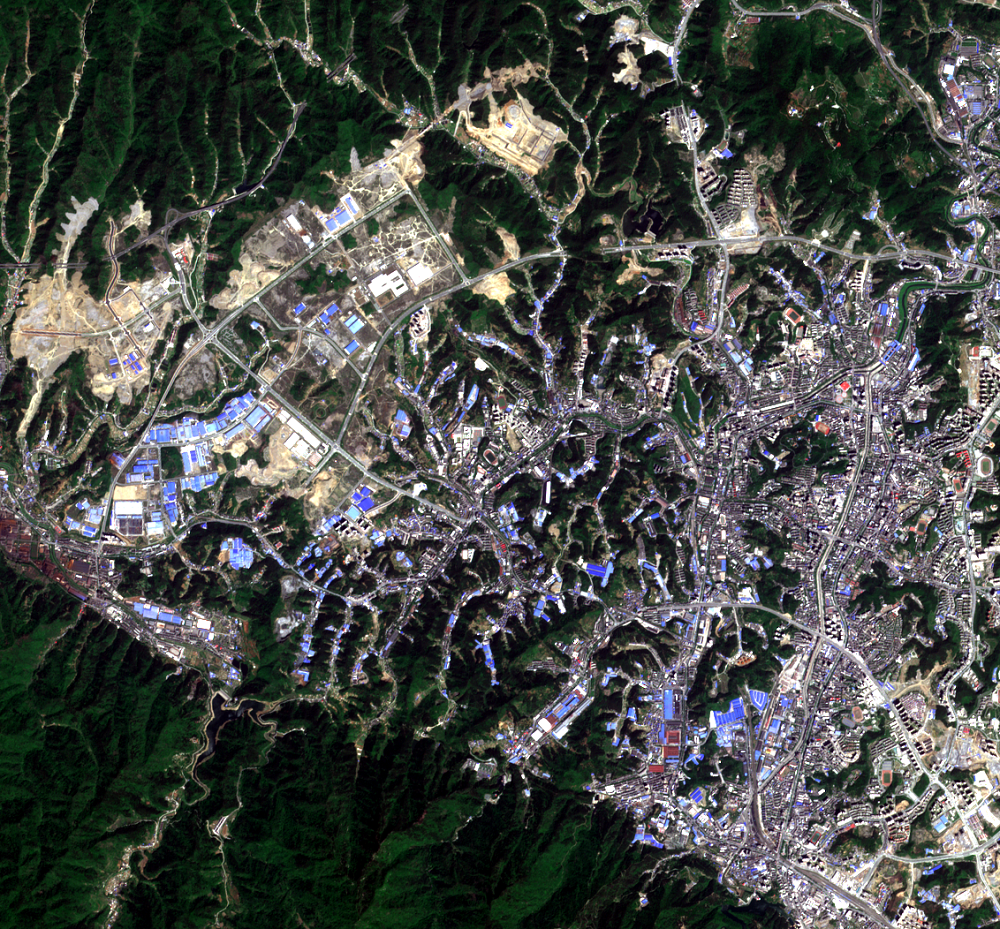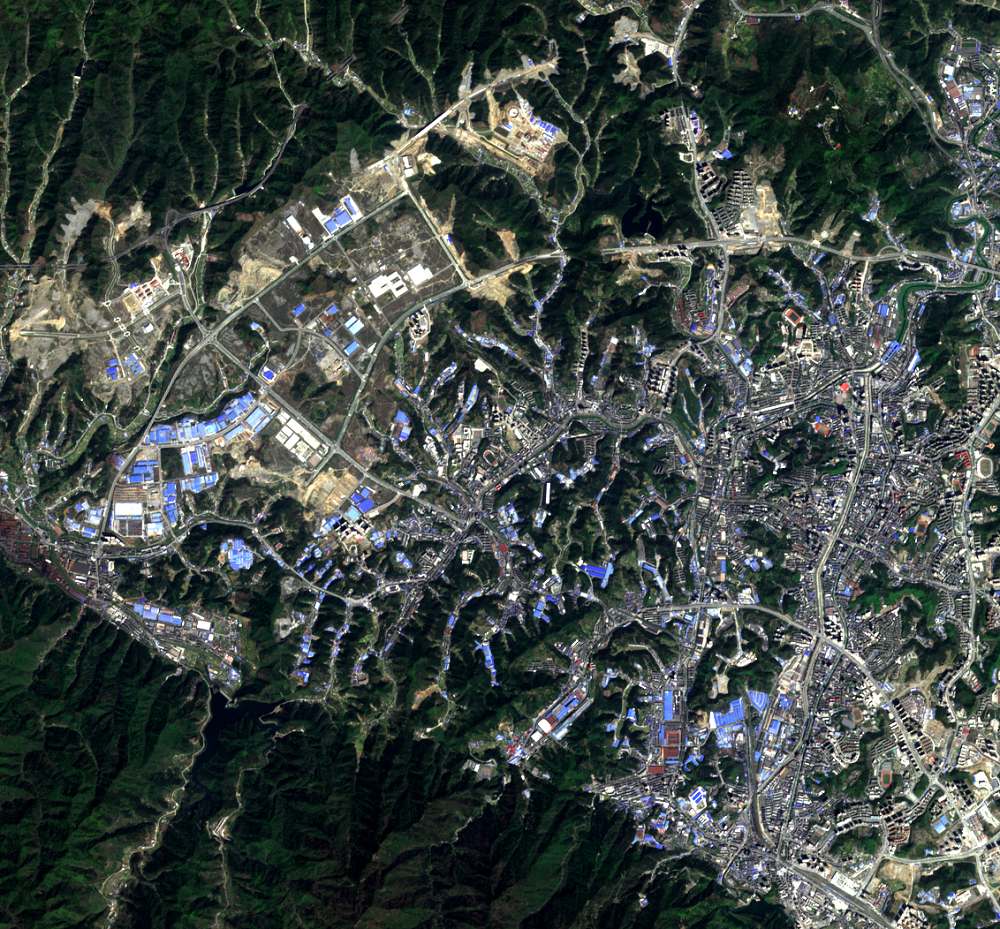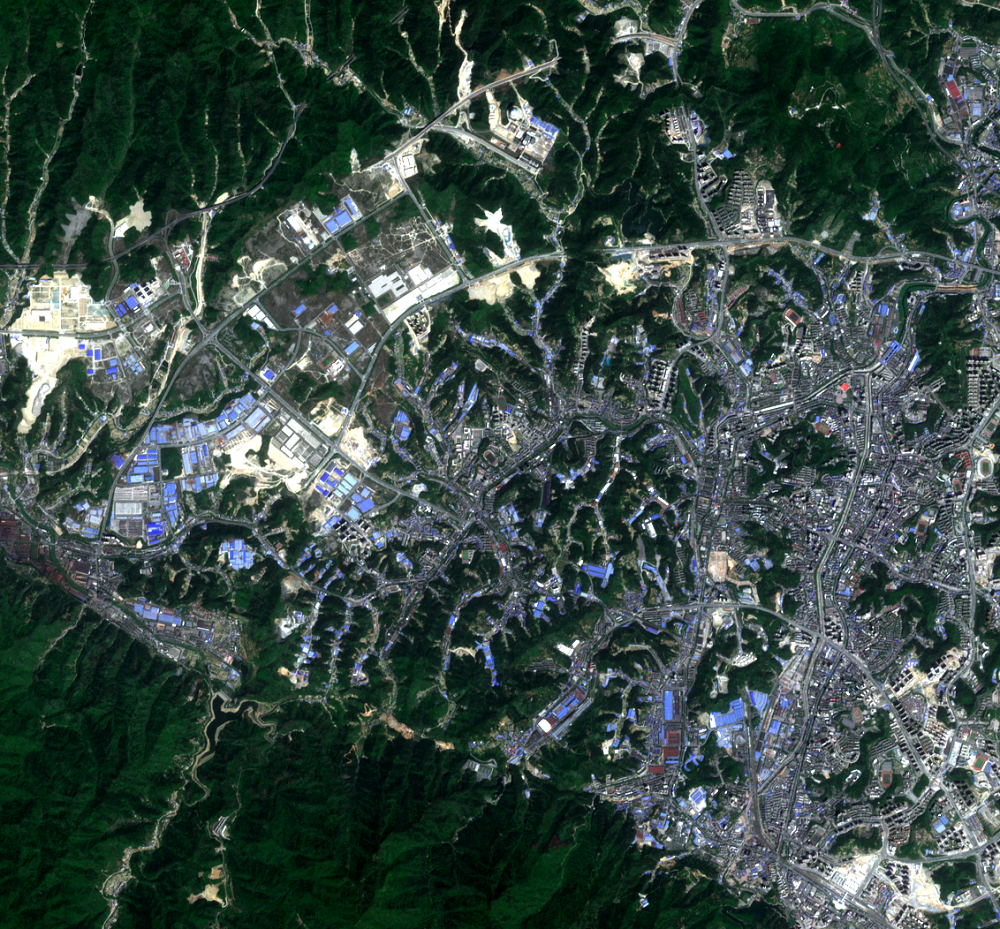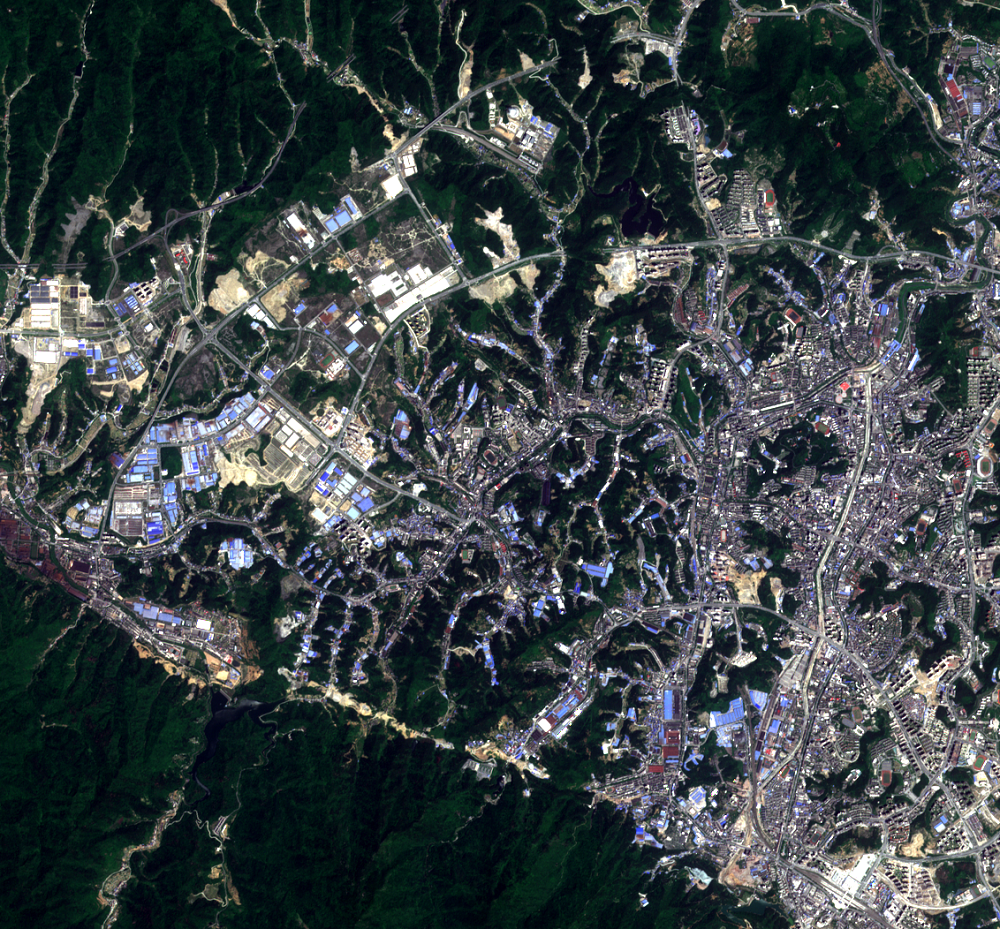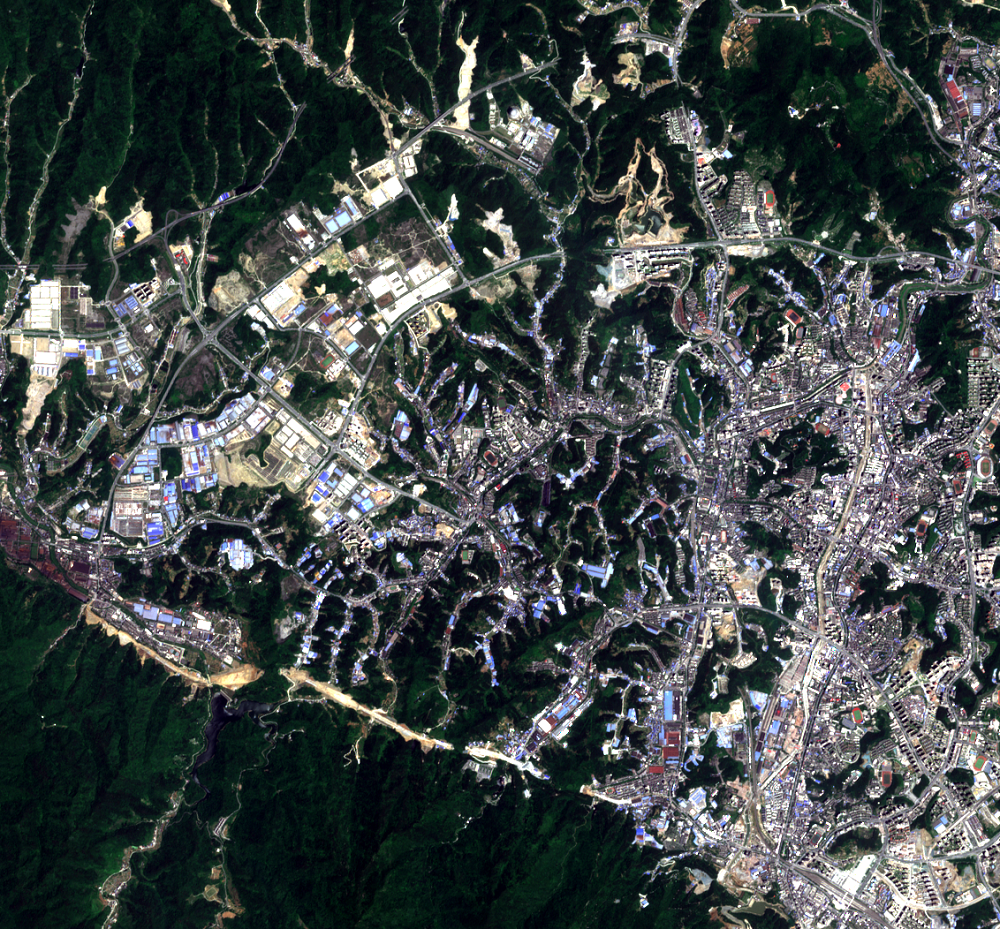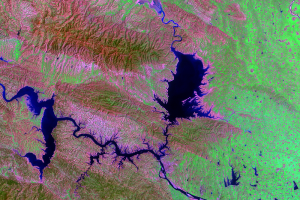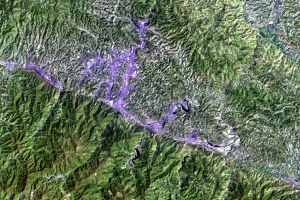Images from Europe's Copernicus Sentinel-2 satellites show a bit more detail than Landsat. These close-up views of Shiyan show the industrial development and land clearing at 10-meter resolution. Blue-topped rooftops are buildings for industry; light tan spots are leveled land.
The hills that are being flattened vary in height from 100 to 150 meters. The material used to level the hills is used to fill valleys. However, building on this infill might not be best for urban construction. The soft soil from the infill subsides easily and is prone to landslides.
Other environmental problems are cropping up based on this land leveling. The process of moving this much material throws dust particles into the air. Changing hills to plains has caused soil erosion, which adds sediment to local water sources. Shiyan is near the headwaters of the South-North Water Transfer Project, a huge project that diverts water to northern China. The sediments can end up in waterways, polluting the water. Furthermore, it can take years for the flattened ground base to be stable enough for building.


